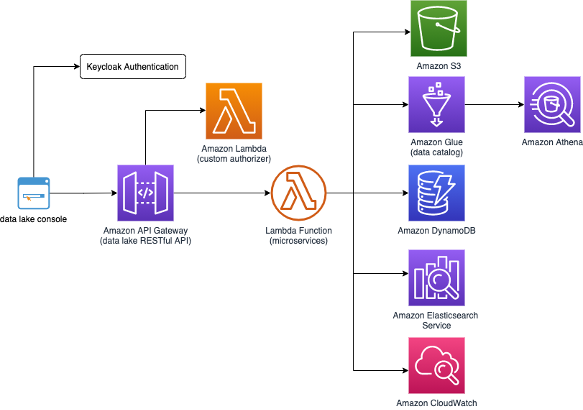What does this Amazon Web Services Solution do?
Many Amazon Web Services customers require a data storage and analytics solution that offers more agility and flexibility than traditional data management systems. A data lake is a new and increasingly popular way to store and analyze data because it allows companies to manage multiple data types from a wide variety of sources, and store this data, structured and unstructured, in a centralized repository.
The Amazon Web Services Cloud provides many of the building blocks required to help customers implement a secure, flexible, and cost-effective data lake. These include Amazon Web Services managed services that help ingest, store, find, process, and analyze both structured and unstructured data. To support our customers as they build data lakes, Amazon Web Services offers the data lake solution, which is an automated reference implementation that deploys a highly available, cost-effective data lake architecture on the Amazon Web Services Cloud along with a user-friendly console for searching and requesting datasets.
Version 2.3 of the solution uses the most up-to-date Node.js runtime. Version 2.1 uses the Node.js 8.10 runtime, which reaches end-of-life on December 31, 2019. To upgrade to version 2.3, you must deploy the solution as a new stack.
Note: this solution is designed for Amazon Web Services Services that are available in China regions.
Amazon Web Services Solution Overview
Amazon Web Services offers a data lake solution that automatically configures the core Amazon Web Services services necessary to easily tag, search, share, transform, analyze, and govern specific subsets of data across a company or with other external users. The solution deploys a console that users can access to search and browse available datasets for their business needs. The solution also includes a federated template that allows you to launch a version of the solution that is ready to integrate with Microsoft Active Directory.
The diagram below presents the data lake architecture you can deploy in minutes using the solution's implementation guide and accompanying Amazon CloudFormation template.

Data Lake on Amazon Web Services Solution Architecture
The Amazon CloudFormation template configures the solution's core Amazon Web Services services, which includes a suite of Amazon Lambda microservices (functions), Amazon Elasticsearch for robust search capabilities, open source software Keycloak for user authentication, Amazon Glue for data transformation, and Amazon Athena for analysis.
The solution leverages the security, durability, and scalability of Amazon S3 to manage a persistent catalog of organizational datasets, and Amazon DynamoDB to manage corresponding metadata. Once a dataset is cataloged, its attributes and descriptive tags are available to search on. Users can search and browse available datasets in the solution console, and create a list of data they require access to.
The solution keeps track of the datasets a user selects and generates a manifest file with secure access links to the desired content when the user checks out.
Data Lake on Amazon Web Services
Version 2.3
Last updated: 10/2020
Author: Amazon Web Services
Estimated deployment time: 30 min
Features
Data lake reference implementation
Managed storage layer
Data access flexibility
User interface
Federation sign in

Browse our portfolio of Amazon Web Services -built solutions to common architectural problems.

Find Amazon Web Services certified consulting and technology partners to help you get started.







